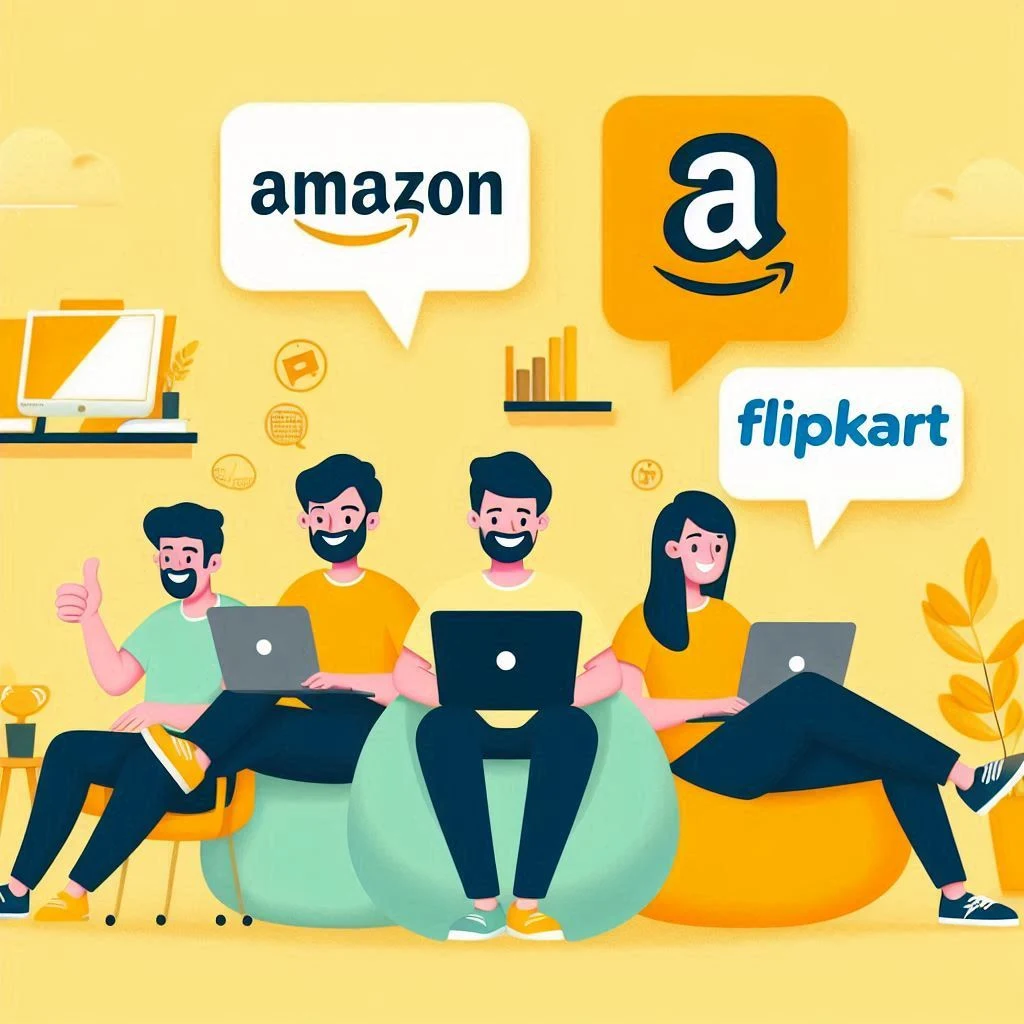
The Indian e-commerce market will be worth 300 billion dollars by 2030. It’s a sign that more people will start using E-commerce platforms to shop online.
As a result, emerging e-commerce brands have immense opportunities. But they also have to beat those giants sitting at the top to establish themselves.
And it’s the story of every industry. How do you stay in this highly competitive industry, you might wonder. The answer is simple yet complicated, in fact just two words —- effective marketing.
You can always learn from big brands in the industry and apply those lessons to your business. So today we will break down the marketing strategies of Amazon v/s Flipkart and dissect their approaches, reveal their audience insights and explore their most impactful campaigns.
Table of contents
- Brand Overview
- Amazon vs. Flipkart Brand’s Audience
- Amazon vs. Flipkart Brand’s Positioning
- Amazon vs. Flipkart Marketing Strategy
- Stand Out Events
- Challenges Amazon vs Flipkart
- Current Standings of Company Amazon vs Flipkart
- Conclusion
- FAQs
Brand Overview
Amazon India
Amazon came to India in 2013 and quickly won hearts with its massive product selection and customer-first approach. They redefined convenience in e-commerce. Because people could easily get everything delivered to their doorstep.
So their strategy is simple. Innovate, improve and leverage the logistics network.
Flipkart
Flipkart was first started as a small book-selling venture. And see how much it has grown today. The brand hit a significant milestone when Walmart acquired it in 2018. Since then, they have expanded their offerings, cracked logistics and have constantly evolved with the changing needs of the market.
Amazon vs. Flipkart Brand’s Audience
Amazon India and Flipkart both attract diverse customer bases, but their targeting strategies reveal distinct differences.
Amazon India caters to a wide-ranging demographic, from high-income urban professionals to price-sensitive shoppers. And this is quite visible in their advertising as well. No matter if you are a tech enthusiast, a college student or a working professional — you will find at least one category appealing.
Flipkart, on the other hand, primarily targets young professionals and families, particularly those in the middle-income bracket. They know the savings mindset of Indian consumers. As a result, they target those bargain hunters looking for the best deals.
Amazon vs. Flipkart Brand’s Positioning
Amazon India positions itself as the epitome of customer-centricity, promising unmatched convenience, an extensive product range and rapid delivery. To retain their customers, they also offer Prime membership where users can get early access to deals, some exclusive offers and free shipping.
Flipkart, on the other hand, focuses on affordability. If Indians want the best deals on online shopping, they should come to Flipkart. That’s the message that they put out.
They appeal to Indian consumers with frequent promotions and offers every now and then.
Amazon vs. Flipkart Marketing Strategy
SEO Marketing Strategy
Amazon as an e-commerce platform does not employ any SEO strategy. However, sellers on Amazon do. For example, if you are selling any product on Amazon, you will optimise your search listing so that the search engine can find you.
Additionally, Amazon has put out a guideline for sellers for Amazon listings. This includes high-quality images, product descriptions etc.
They also earn from those sellers with their Ads platform. Just how to pay for Google ads, who also pay for Amazon ads to rank in sponsored results within the app.
And to educate and promote it to sellers, it does SEO. They do blogs that educate the sellers about getting started on Amazon.
Additionally, they have also mentioned reviews and testimonials as a part of their SEO strategy on their website.
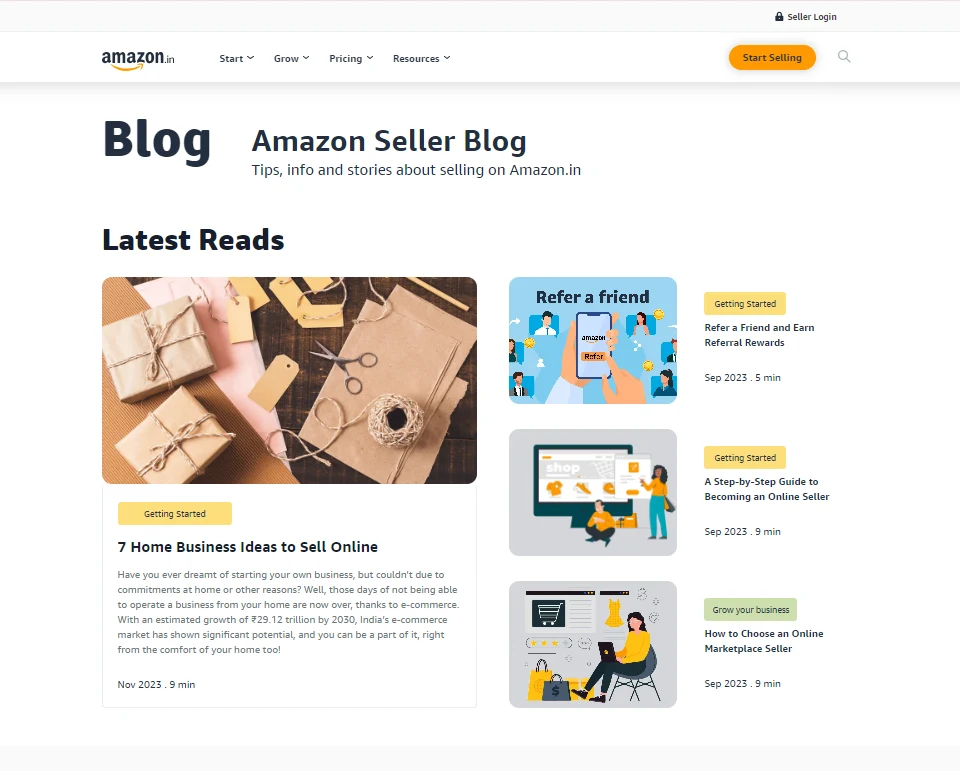
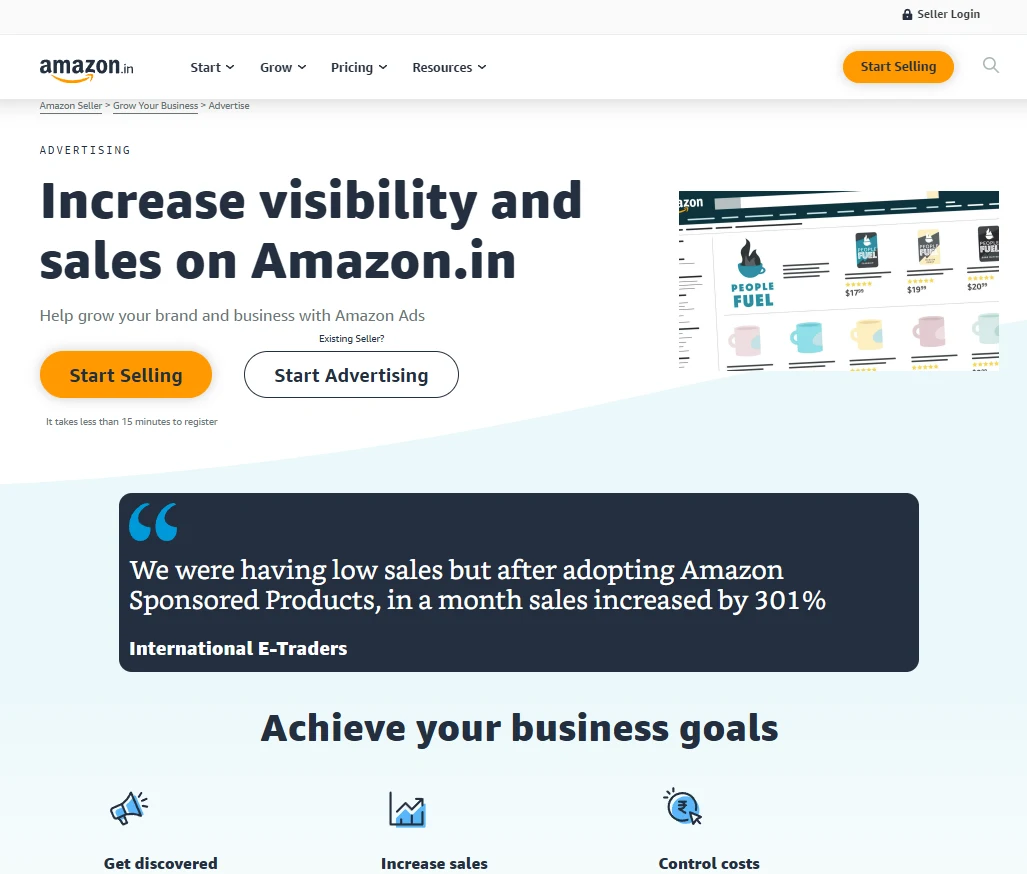
Flipkart also follows a similar SEO Strategy. They have something called a Flipkart seller’s hub. Through this website, they educate the sellers about e-commerce marketing.
First, they create awareness with education. And then nudge the sellers to use their platform.
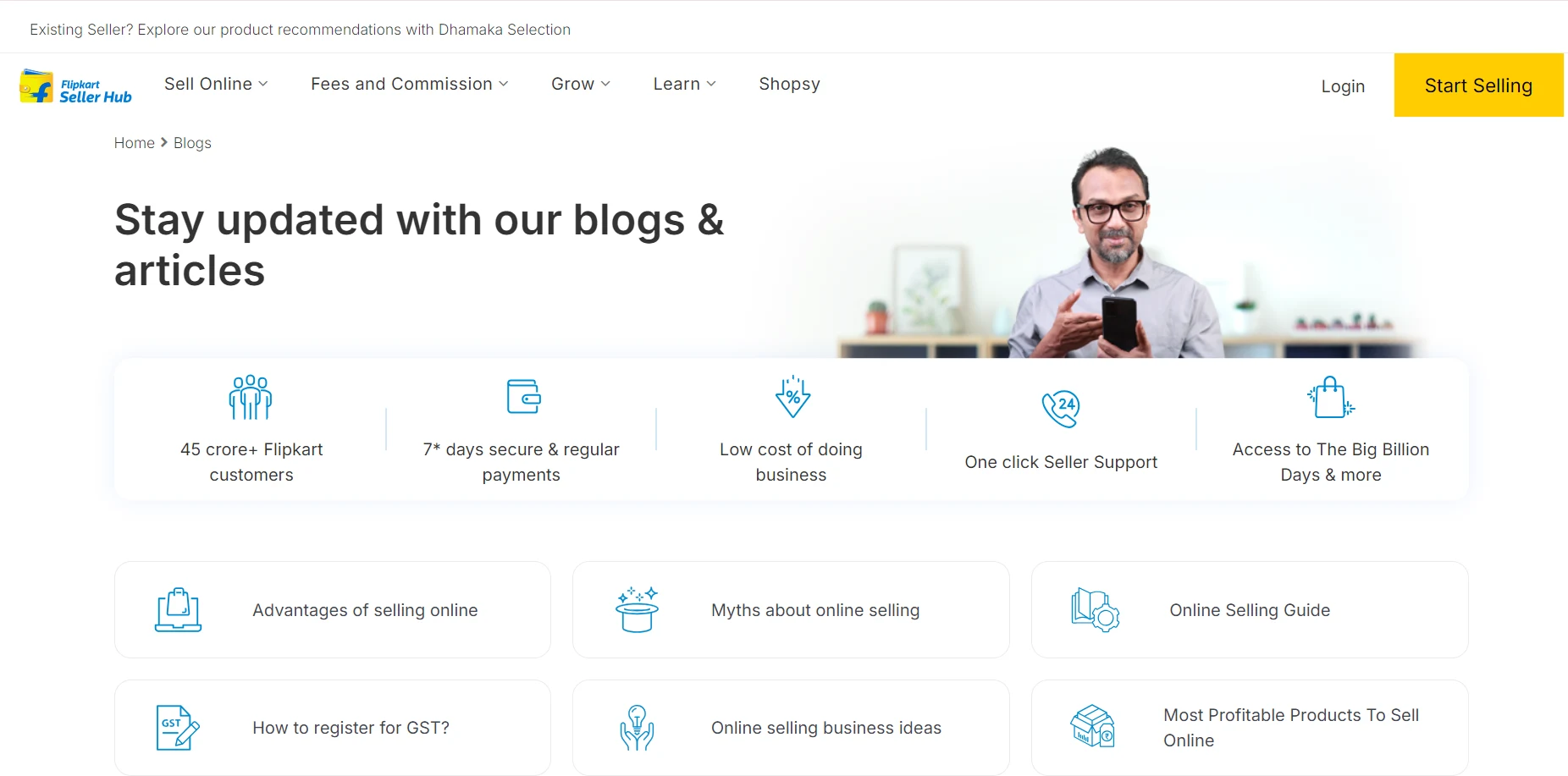
Social Media Marketing Strategy
Amazon is highly active across all social media platforms, especially Instagram. Their content on social media is centred around products and upcoming sales. And the frequency with which they post is also high. On average, they do 2 posts per day.
Take a look at their Instagram feed and you will know their content strategy.
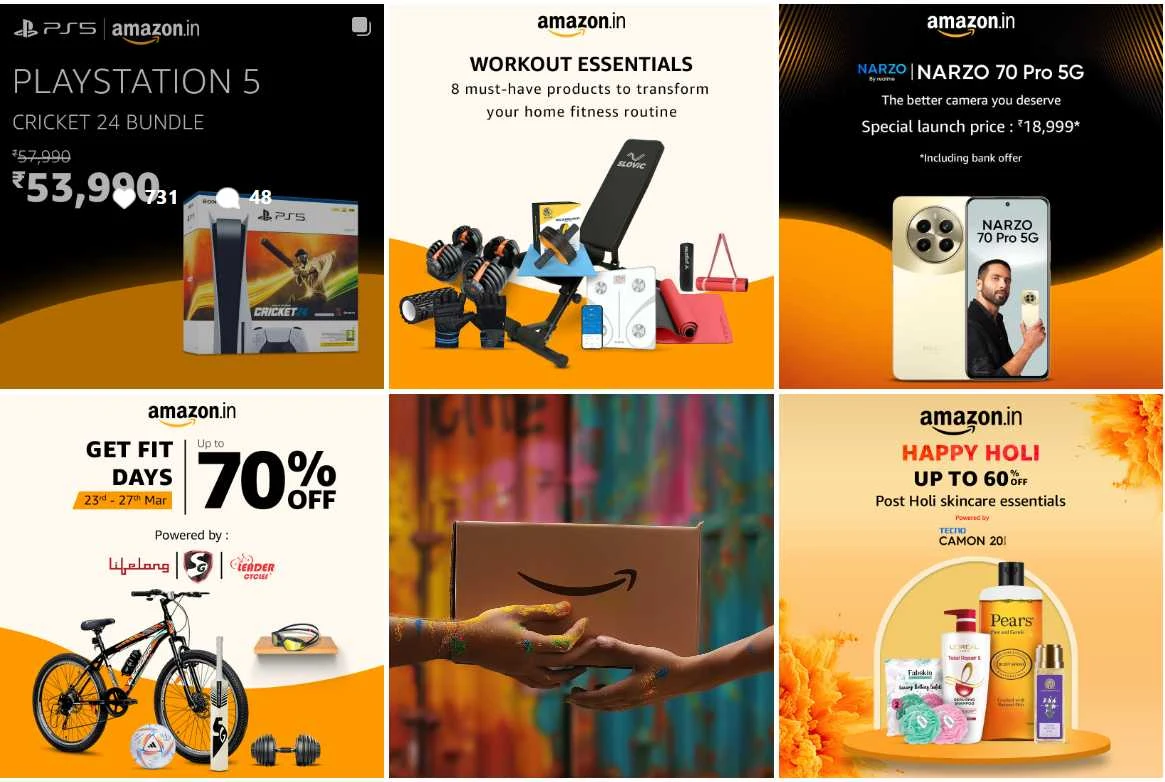
Additionally, they run Meta ads to promote upcoming sales and offers.
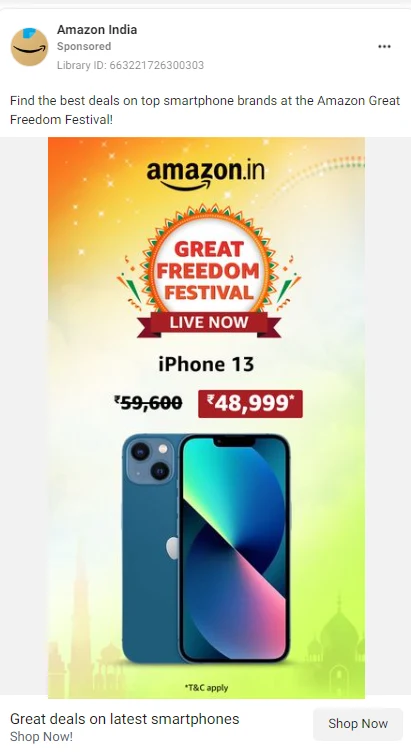
Flipkart’s strategy is also similar. They also show products. However, they use relatable scenarios with the products. They also use humour in their content. And unlike Amazon, Flipkart uses a mix of content formats (Reels, Statics, Carousel) etc.
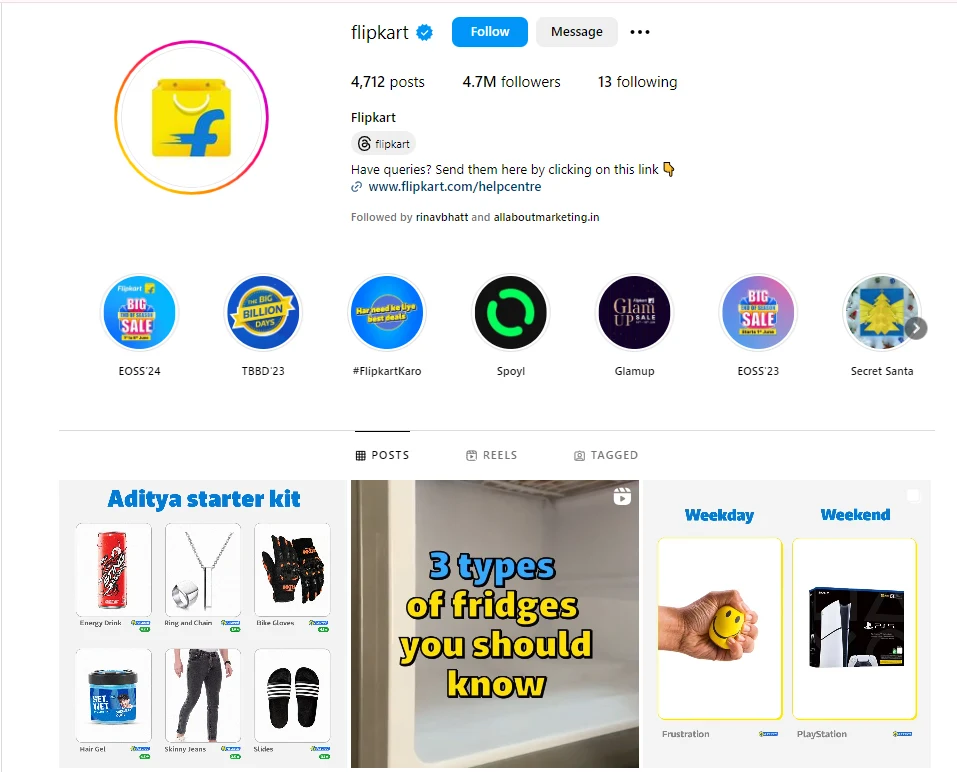
The ads that they run on Meta are highly quirky. Here’s an example :
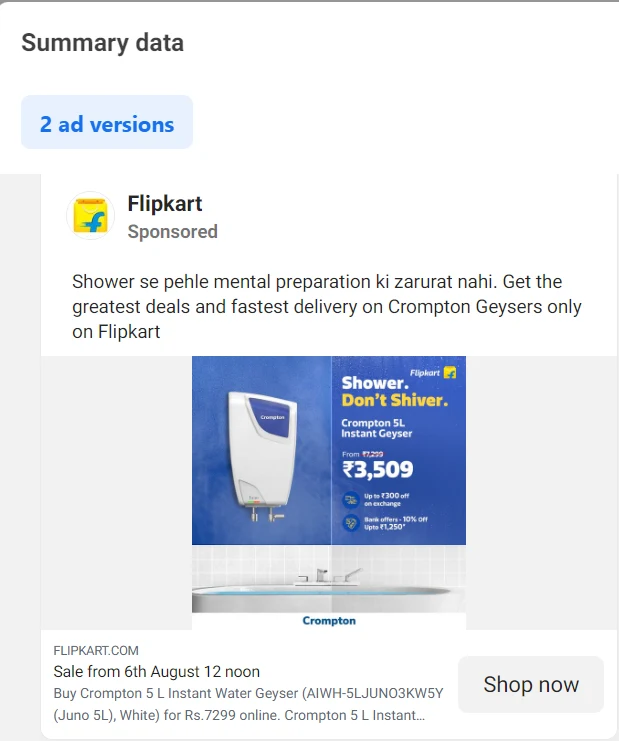
That’s not it. Flipkart has an account called Flipkart Stories. They share seller stories here to attract sellers to their platform and engage the existing sellers. After all, those sellers are also their customers in a way.
In-App Marketing
Amazon India in particular has a very unique approach for in-app marketing. There’s a tiny section on the Amazon India app called Mini TV.
You can watch mini-series on that platform. It’s a way to attract users with the content so that they download the app. Next, when there’s an offer — Amazon will simply send notifications and entice the customers to buy the products.
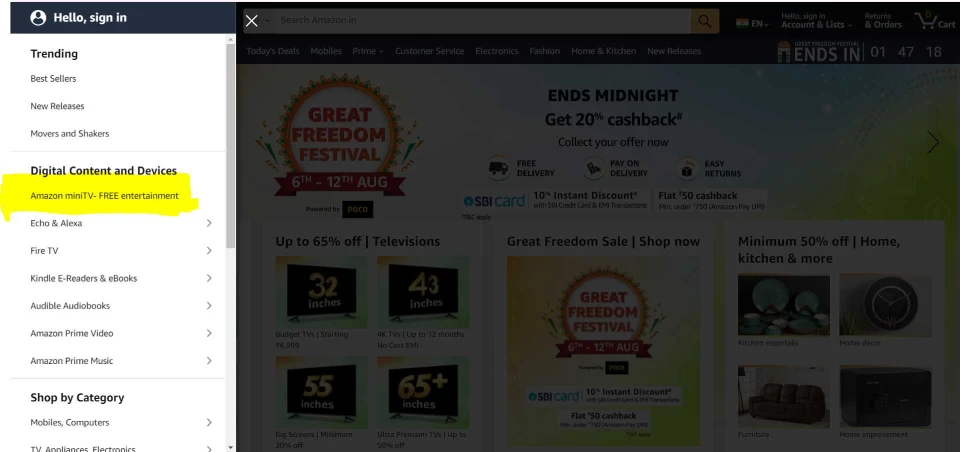
Flipkart India‘s approach is traditional. They deliver real-time notifications about sales, discounts and flash deals.
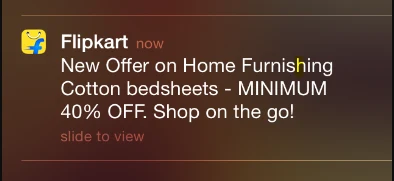
Outdoor Marketing
Amazon India designs their billboard ads such that they are impossible to miss. They roll out billboards and hoardings in high-traffic areas across major cities like Delhi, Mumbai and Bengaluru.
They’re visually striking and often straightforward so that it resonates with their diverse audience. They also use public transport branding, wrapping buses and metro stations with their vibrant ads, making sure commuters can’t escape the Amazon buzz.
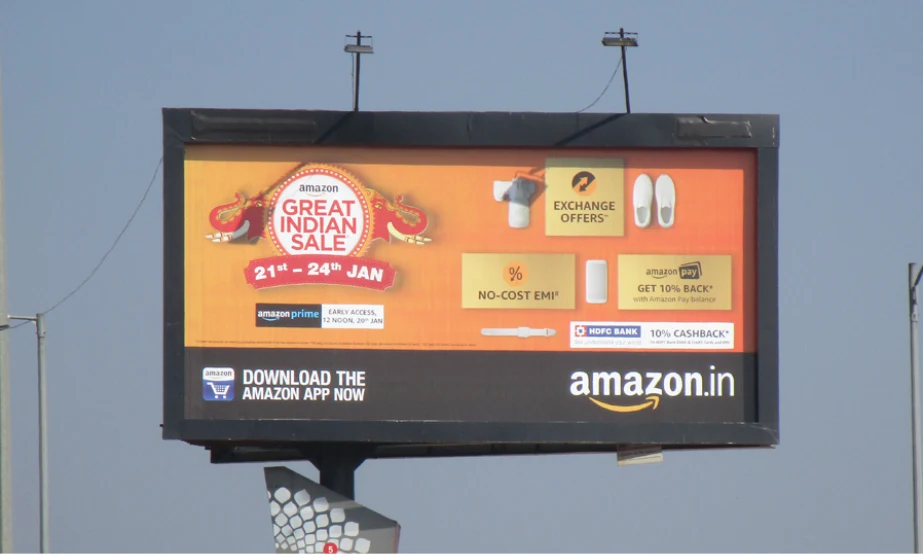
Flipkart’s outdoor ads are often bold and witty. They strategically place their ads in busy marketplaces, shopping districts and even near residential areas to target families who are likely to be out shopping.
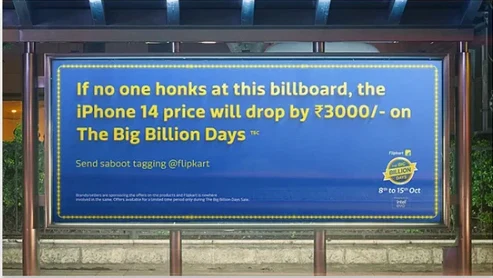
Stand Out Events
Amazon India’s Great Indian Festival
The Great Indian Festival is held every year as it is Amazon’s flagship event. They have huge discounts on multiple products during this sale. And this also includes high-ticket items like electronics.
Although it happens every year, we will talk about their promotional strategy in the past when the world was going through the COVID-19 outbreak.
As the world was still adjusting to the new normal, Amazon knew it had to make an extra effort to connect with its audience.
They kicked off the festival with the theme of upgrading homes and lives during the festive season, which resonated deeply with Indian households.
They did interactive social media campaigns to get people talking about it. They launched contests that got people buzzing, like a smartphone search across platforms and word search games to offer prizes or discount vouchers.
But Amazon didn’t stop there. They also knew that in the age of influencers, having popular figures talk about your sales can make a huge difference.
Rather than just roping in influencers directly, they focused on content created by and for partner brands, seamlessly blending influencer reach with brand promotion.
Amazon also understood the power of exclusivity, opening the sale early for Prime members.
We are hiding some smartphones across our social platforms & on the Amazon app. All you have to do is – Find it, Share it with us using #AmazonSpecialsHunt & you can stand a chance to win that respective smartphone. The contest starts tomorrow! #DoorToHappiness pic.twitter.com/c73LwygFKA
— Amazon India (@amazonIN) October 8, 2020
Flipkart’s Big Billion Days
This is also an annual sale offered by Flipkart around the Diwali festival. Their 2020 promotional strategies were something else. So we will talk about only those strategies.
Flipkart went all out with celebrity endorsements, featuring big names like Ranbir Kapoor, Alia Bhatt, Amitabh Bachchan and Virat Kohli.
Flipkart also capitalised on their popularity by using these faces on social media as well. Leading up to the sale, Flipkart ramped up its promotional activities by showcasing behind-the-scenes footage on social media, giving customers a glimpse into the extensive preparations for the sale.
During the sale, Flipkart cleverly utilised Instagram’s interface to create visually engaging posts that featured these celebrities, making the content more interactive and eye-catching
They also embraced the ongoing cricket season by integrating cricketing legends like AB de Villiers, Sachin Tendulkar and Virat Kohli into their promotional content, appealing to the sports-loving demographic.
By the end of the sale, Flipkart concluded their campaign on a heartfelt note with a creative featuring Amitabh Bachchan expressing gratitude to the people of India, reinforcing the brand’s connection with its audience.
Challenges Amazon vs Flipkart
Amazon’s journey in India has been nothing short of impressive, but it hasn’t been without its hurdles.
One of the biggest hurdles has been the intensified competition since Walmart acquired Flipkart in 2018. With Walmart’s backing, Flipkart has gained an advantage in terms of resources, global expertise and aggressive pricing strategies.
Walmart’s influence has allowed Flipkart to expand rapidly, especially in categories like groceries and fashion, where they’ve managed to carve out a strong market presence.
This has made it tougher for Amazon to maintain its leading position, as they are now up against a well-resourced rival that’s playing to win.
Additionally, the rise of quick commerce platforms like Blinkit (formerly Grofers), which offer super-fast delivery of groceries and essentials, has presented another challenge for Amazon.
Blinkit, with its strategic partnership with Zomato, has rapidly expanded its network to ensure fast delivery, something Amazon is yet to fully capture.
This trend has forced Amazon to rethink its strategies in this segment, as more consumers are gravitating towards the convenience of quick commerce services.
Flipkart also has its own set of challenges despite being a major player in the Indian e-commerce space. One of the major hurdles for them is staying profitable in a market that’s fiercely competitive and price-sensitive.
With Amazon and several other local players like Reliance JioMart and Tata Cliq in the fray, Flipkart is constantly under pressure to offer the best deals and maintain customer loyalty.
This often means engaging in deep discounting, which can hurt profitability. On top of these challenges, Flipkart is also facing tough competition in the quick commerce sector.
But what does it have to do with quick commerce? Well, Flipkart has entered this space with its service called Flipkart Quick (also known as Flipkart Minutes), but they are up against well-established players like Blinkit and Swiggy Instamart.
These competitors already have a strong network and customer base which makes it difficult for Flipkart to gain significant traction in this fast-paced market.
Current Standings of Company Amazon vs Flipkart
| Metric | Amazon India | Flipkart |
|---|---|---|
| Revenue (2023) | 222 billion INR | 560 billion INR |
| Social Media Followers | 3 million | 4.7 million |
| App Downloads | +500 million | +500 million |
| Celebrity Endorsements | Recent Celebrity Endorsements feature Aditya Roy Kapoor and Ananya Pandey | They are mostly collaborating with fashion and lifestyle influencers currently. |
Conclusion
Both Amazon and Flipkart have demonstrated exceptional customer understanding. They craft strategies that keep their user base loyal and engaged.
You can learn how to go the extra mile to retain customers with a strategy like Prime Membership. They also provide free entertainment in their app to encourage more downloads.
And what we can learn from both brands is aggressive marketing is done in the right way. Both are pretty active on social media and run ads to generate awareness about promotions.
If you’re looking to implement such strategies and make a lasting impact in your market, our digital marketing agency is here to help.
We specialise in creating tailored digital marketing strategies for brands. Let’s work together to expand your brand.



